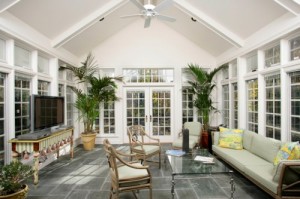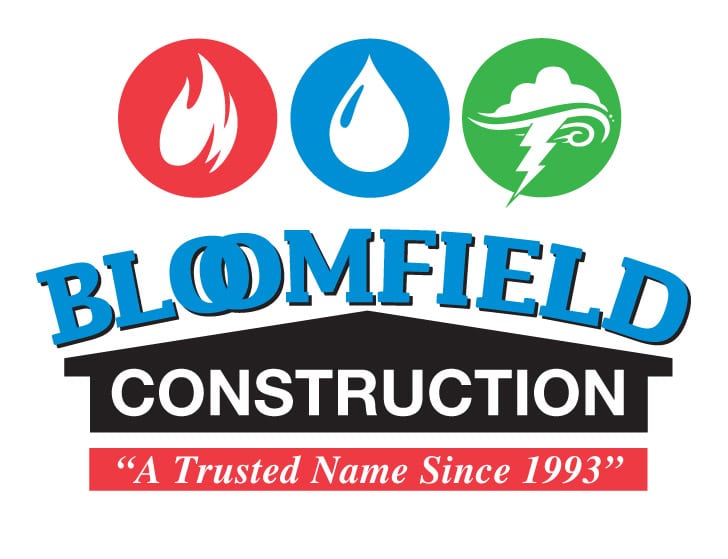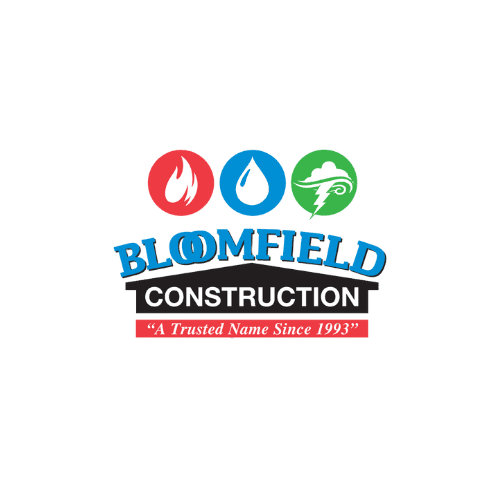Bloomfield Construction Builds Most Energy Efficient Room Possible!
 Back in the fall of 2004 a past customer of ours Dr. & Mrs. Robert Silver came back to us for a project they were wanting to build. The goal of the project was to add on to the back of their existing 1970s ranch maintaining the view and feeling of being in the back yard without the experiencing the cold or hot temperatures. This was going to be a challenge because of the forced air furnace system they currently had in place. The windows were a simple choice as we decided on Pella casements with transom units above. We set the bottom of the windows at 14 from the finished floor heigth in order to maximize the view. The Silvers said they didn’t want to be looking at much drywall and wanted to feel like they were outside. In order to keep the room as energy efficient as possible the first key component was the selection of closed cell, spray foam insulation applied to the ceiling, walls, and crawl area instead of traditional blanket. All corner studs, cracks and crevasses were caulked prior to installing the insulation. The dirt floor of the crawl space was covered with a 10-mil vapor-block plastic to eliminate moisture drive and the exterior masonry walls were sprayed to insulate and waterproof to complete the process.
Back in the fall of 2004 a past customer of ours Dr. & Mrs. Robert Silver came back to us for a project they were wanting to build. The goal of the project was to add on to the back of their existing 1970s ranch maintaining the view and feeling of being in the back yard without the experiencing the cold or hot temperatures. This was going to be a challenge because of the forced air furnace system they currently had in place. The windows were a simple choice as we decided on Pella casements with transom units above. We set the bottom of the windows at 14 from the finished floor heigth in order to maximize the view. The Silvers said they didn’t want to be looking at much drywall and wanted to feel like they were outside. In order to keep the room as energy efficient as possible the first key component was the selection of closed cell, spray foam insulation applied to the ceiling, walls, and crawl area instead of traditional blanket. All corner studs, cracks and crevasses were caulked prior to installing the insulation. The dirt floor of the crawl space was covered with a 10-mil vapor-block plastic to eliminate moisture drive and the exterior masonry walls were sprayed to insulate and waterproof to complete the process.
The decision to select closed cell spray foam for this project was significant for many reasons but for the sake of space we will provide only two:
1. Closed cell – Spray polyurethane foam (SPF) has the highest R-value (6.5 to 6.7 per inch) of any other type of insulation. It out performs fiberglass, cellulose, and open cell foam-(Icynene) on every level except for sound attenuation. Their r-values range from 3.3 to 3.6 per inch and have zero waterproofing capabilities. The fact after we did our research, it is our strong opinion the other three insulation options should not even be mentioned as equal comparisons to closed cell SPF on performance criteria.
2. Supplementary structural stability to the addition by 200% almost made the cut here and has to be mentioned, but being able to spray apply the SPF directly to the underside of the roof deck and eliminating traditional venting was certainly a “no-brainer” for our staff. This application is commonly called a “hot roof system” which we find odd because it certainly does not make your roof “hot”. A minimum of only 4 of SPF completely eliminates thermal transfer of any kind — meaning that outside cold and or heat cannot get in and the conditioned air inside stays where it belongs. And for additional peace of mind, the SPF is 100% waterproof (because of its closed cell structure) which locks out any chance of moisture infiltration into the living space.
As you can see, just by changing the insulation specification from fiberglass to foam we dramatically increased the overall efficiency of the project. When it came to heating the room we had but only one choice radiant heating. We selected a product called Floor Heat which we installed directly beneath the tile floor. Twelve inch by Twelve inch PVC squares are laid out to cover the entire floor like a puzzle. Then tubing is run in between all of the squares to encompass the entire floor area. A self contained electric boiler unit was connected to the tubing and glycol was added inside the system and run through. A full masonry mud base was applied directly over the tubing system and a 2 blue stone floor was then applied on top of that. The mud base & stone help to create a radiant mass to help evenly distribute the heat running through the tubing. This keeps the tile floor at a constant even temperature.
With all of the glass and cold tile in this room it would have been impossible to keep the room at a comfortable temperature without a radiant heating system. The tiles would always feel cold no matter what temperature a forced air furnace would be set at, not to mention the furnace would be constantly running. We even went as far as to run the radiant on the set of outside steps that lead into the back yard. This was done so that the Silver’s didn’t have to worry about snow or ice-build up on the steps. We checked these steps in mid December after large amounts of snow and freezing temperatures and they were clear of all snow and ice (no shoveling needed). Since we had roofed the house several years prior it wasn’t a problem matching the existing roofing tiles. This room couldn’t have been constructed any better or more efficient. When it was all said and done, the room turned out beautiful and the customers just love it! The room was completed in the summer of 2005 and won 1st place in the 2006 Qualified Remodeler Master Design Awards “small additions catagory” nationally. (See Photo) For more photos of this job and many others feel free to go to our website and browse our photos page at www.c3sbloomfield.wpengine.com.



